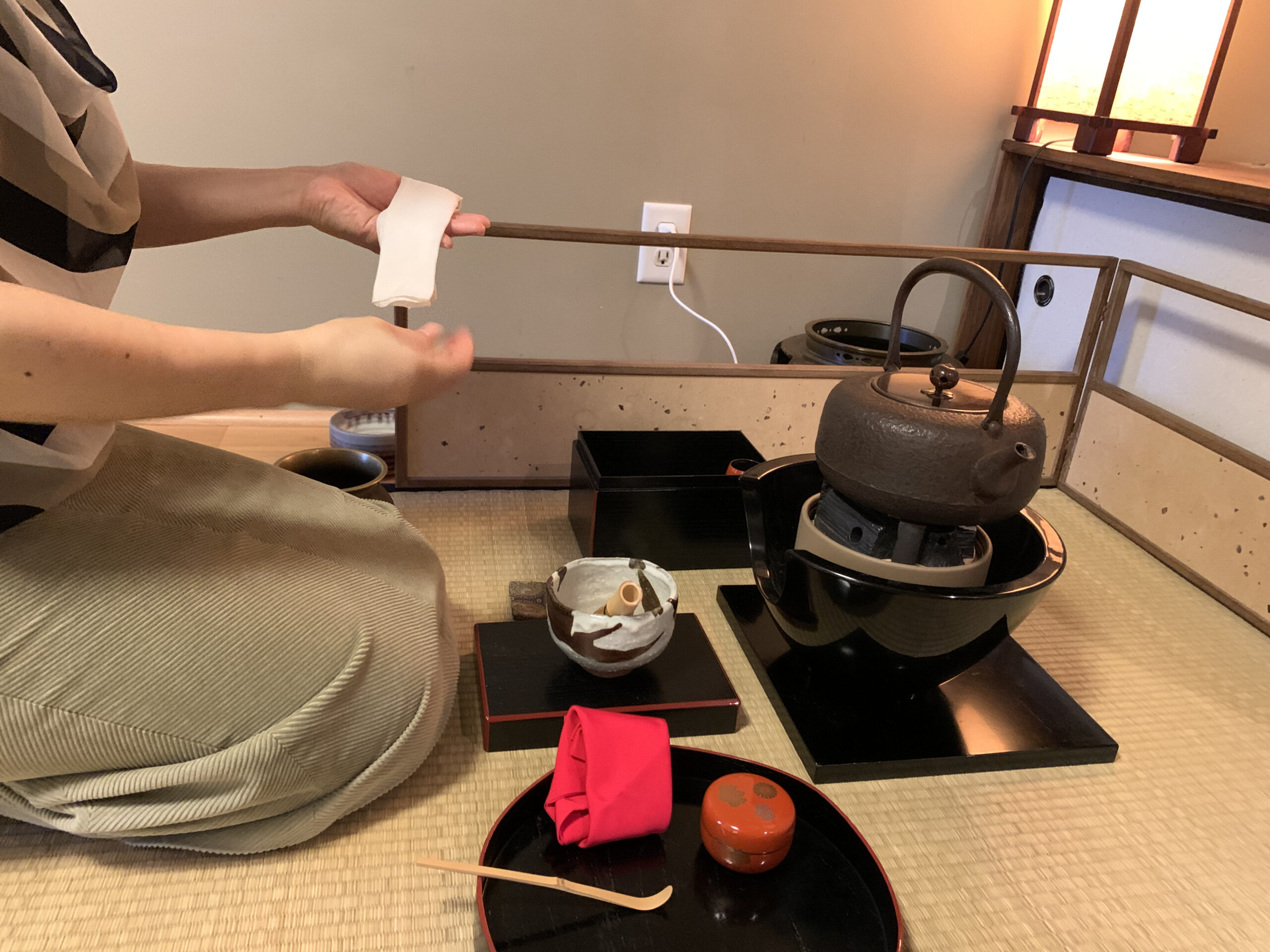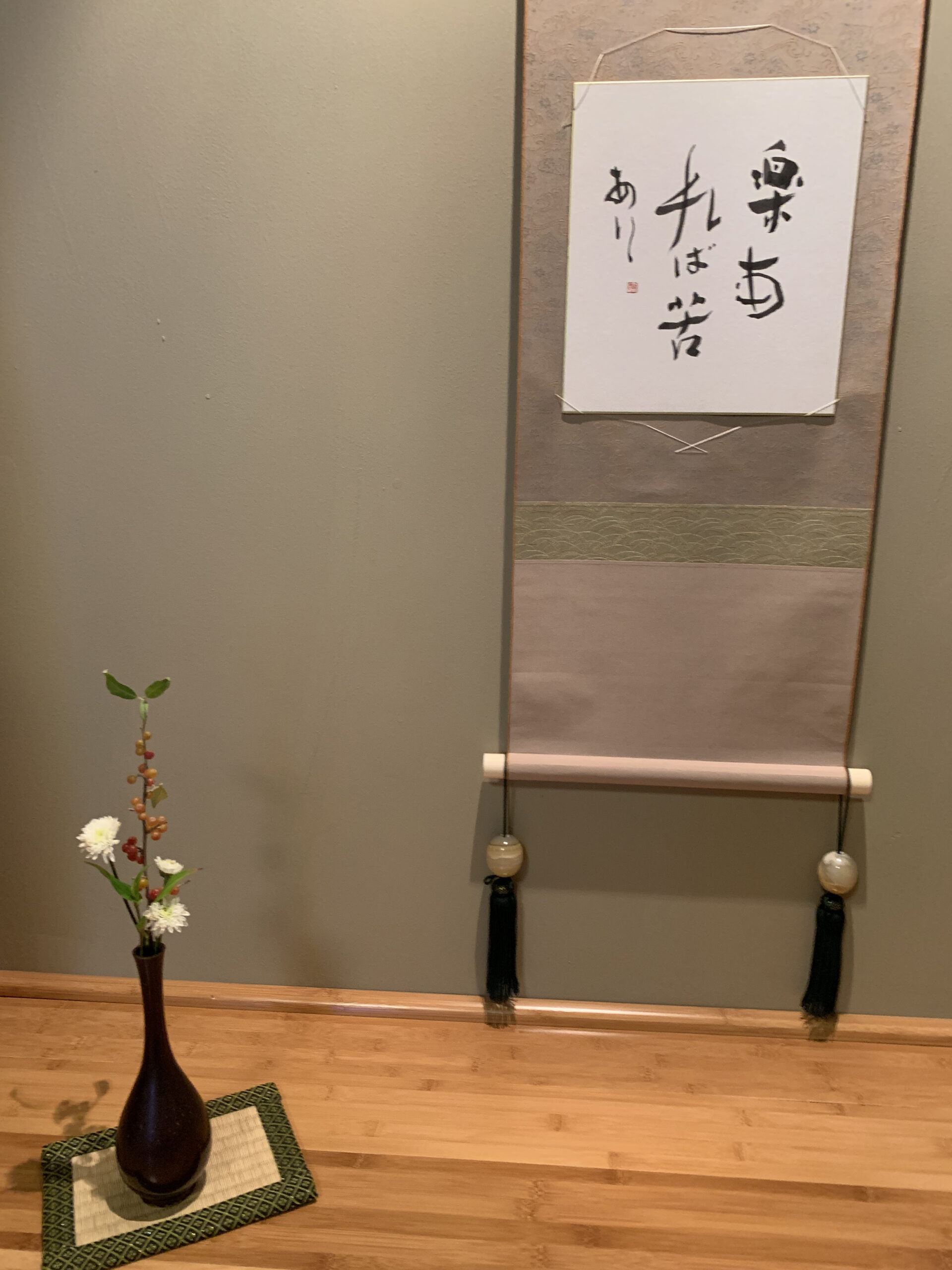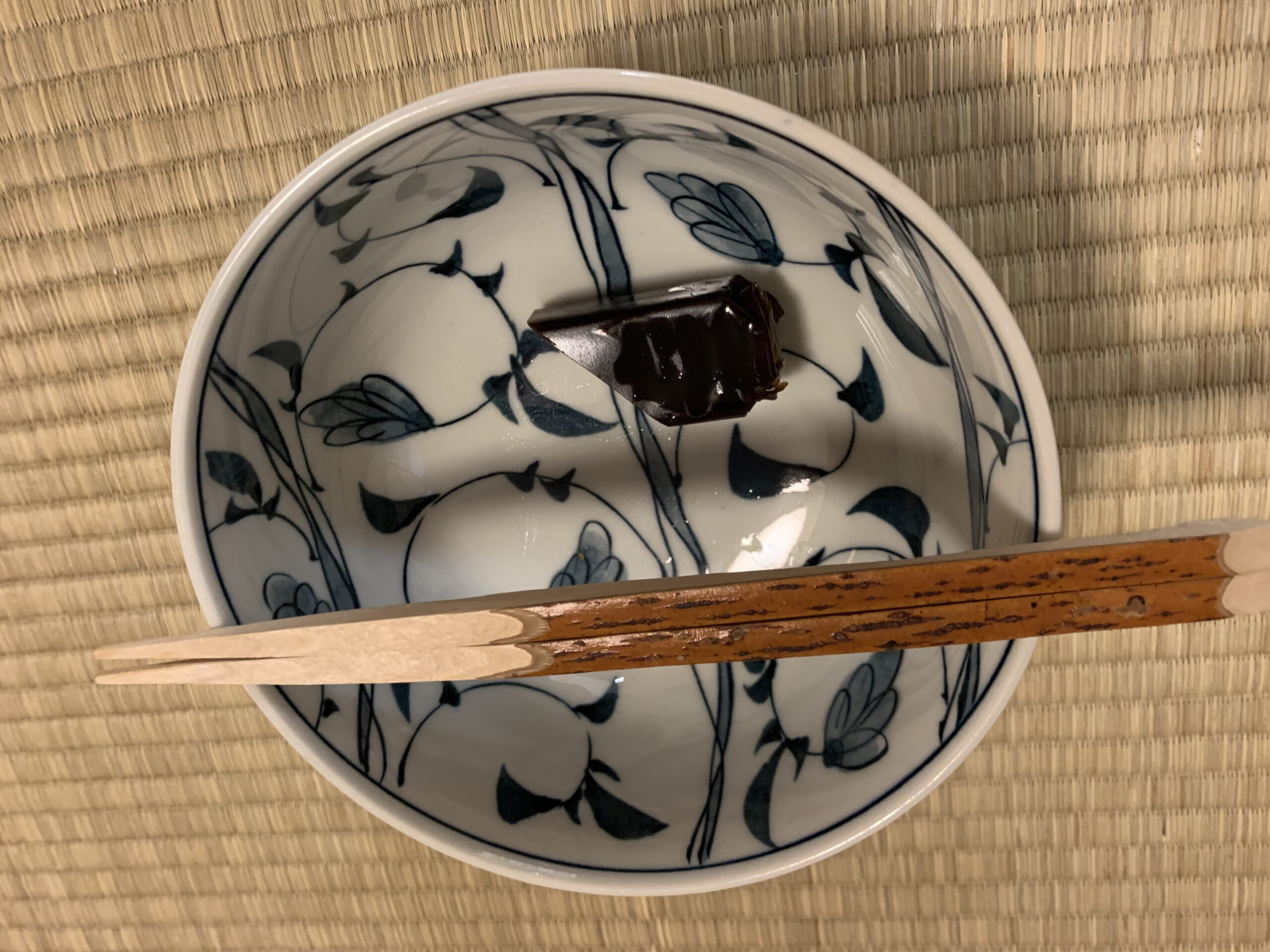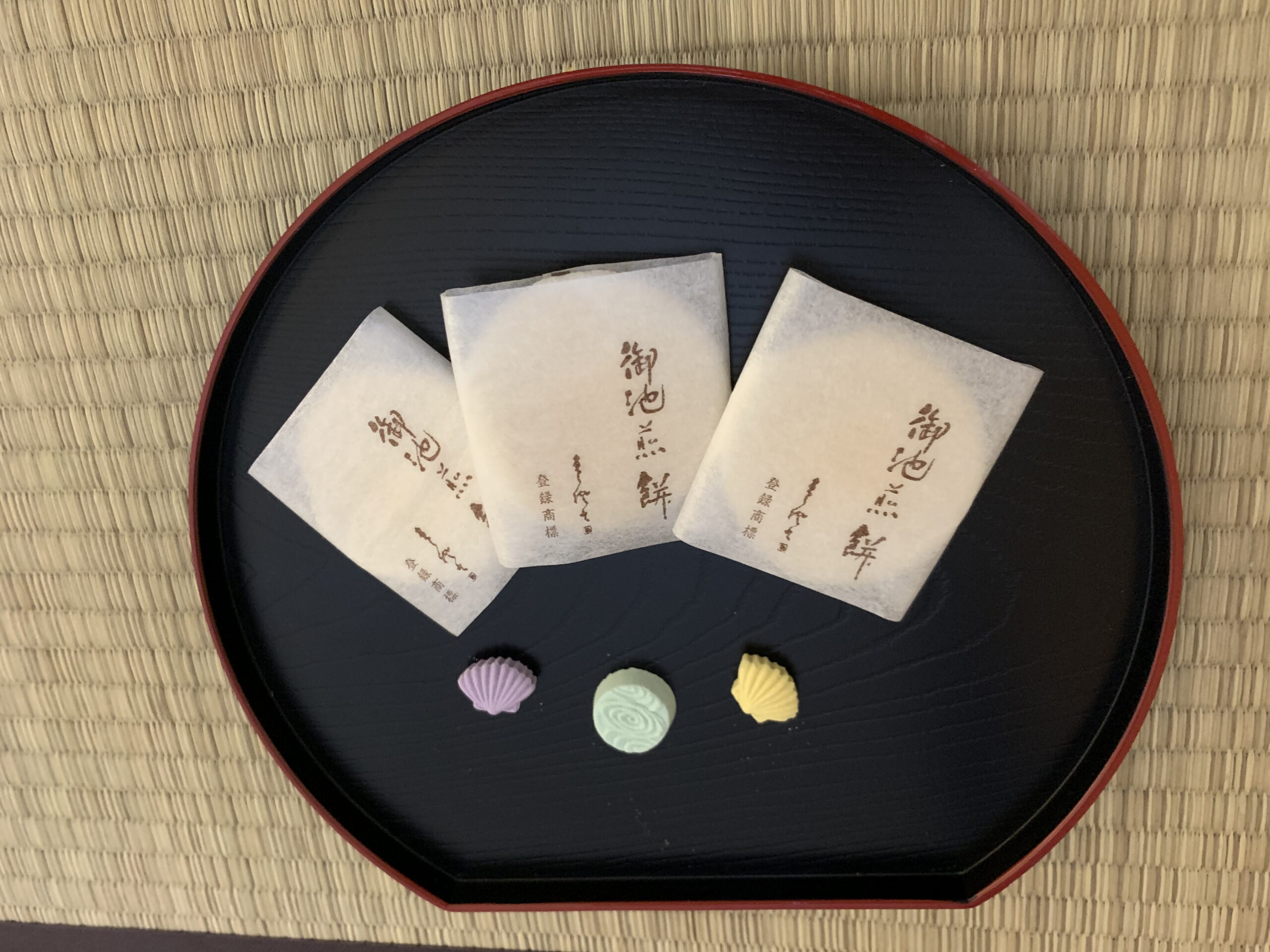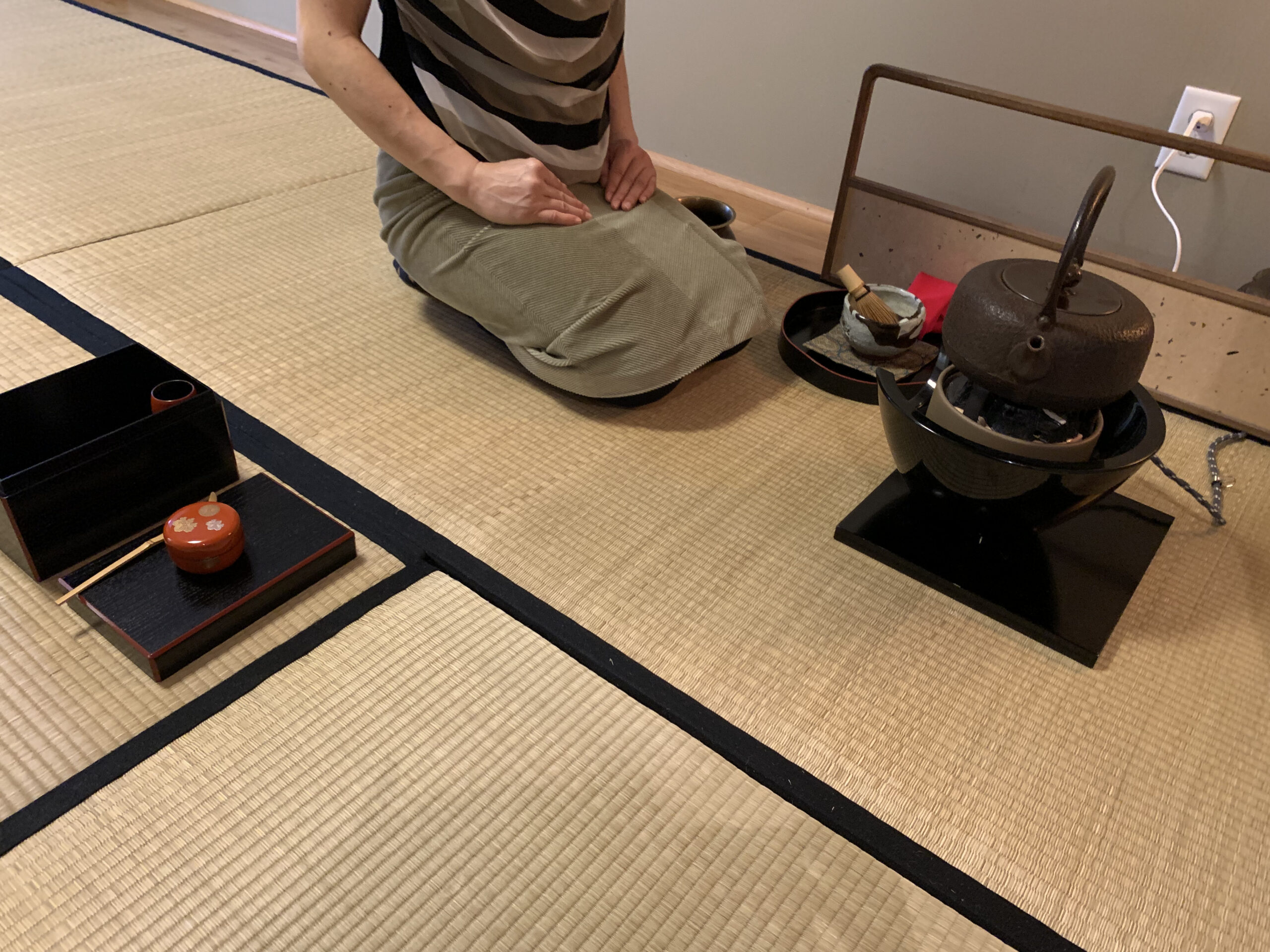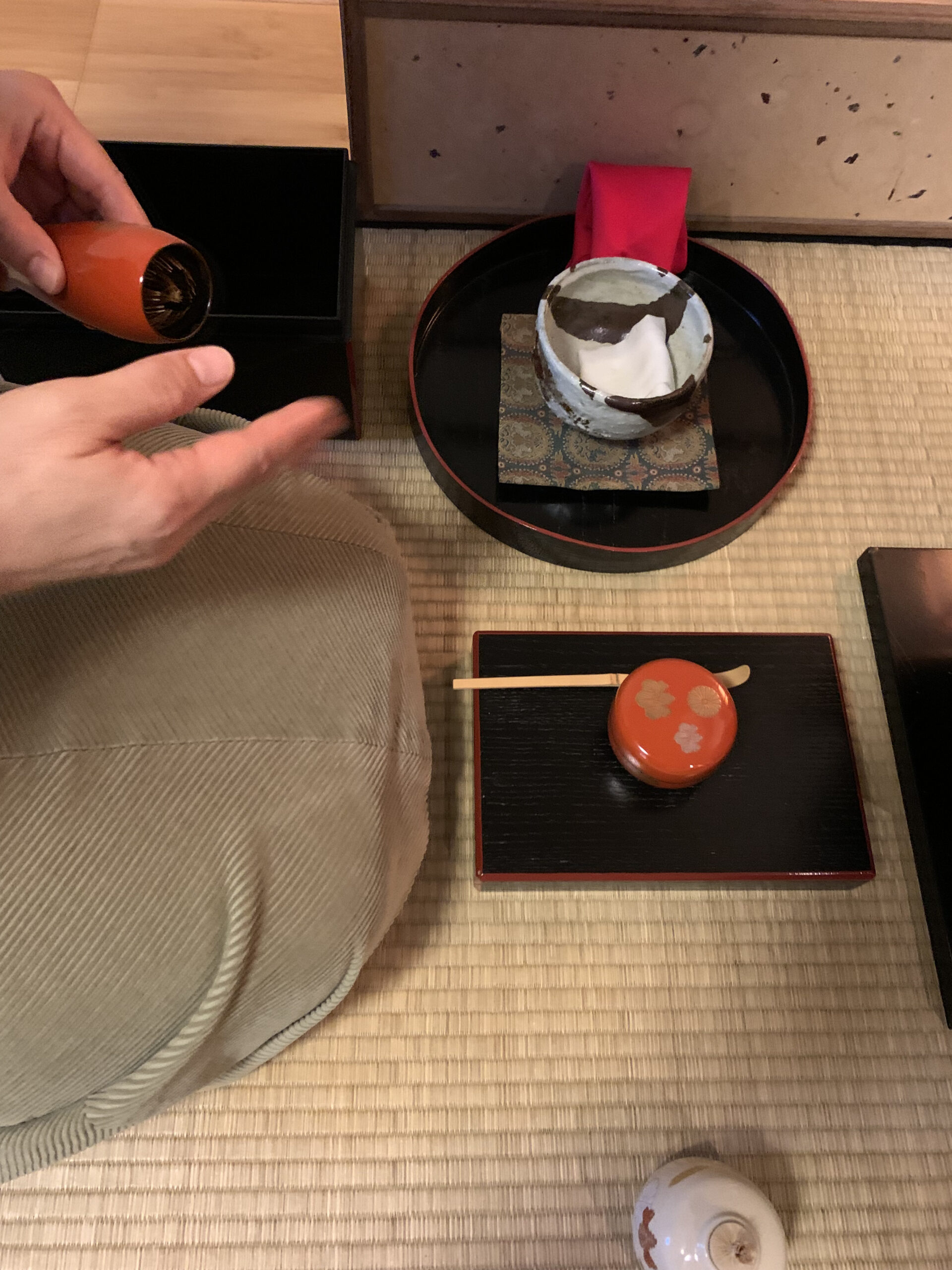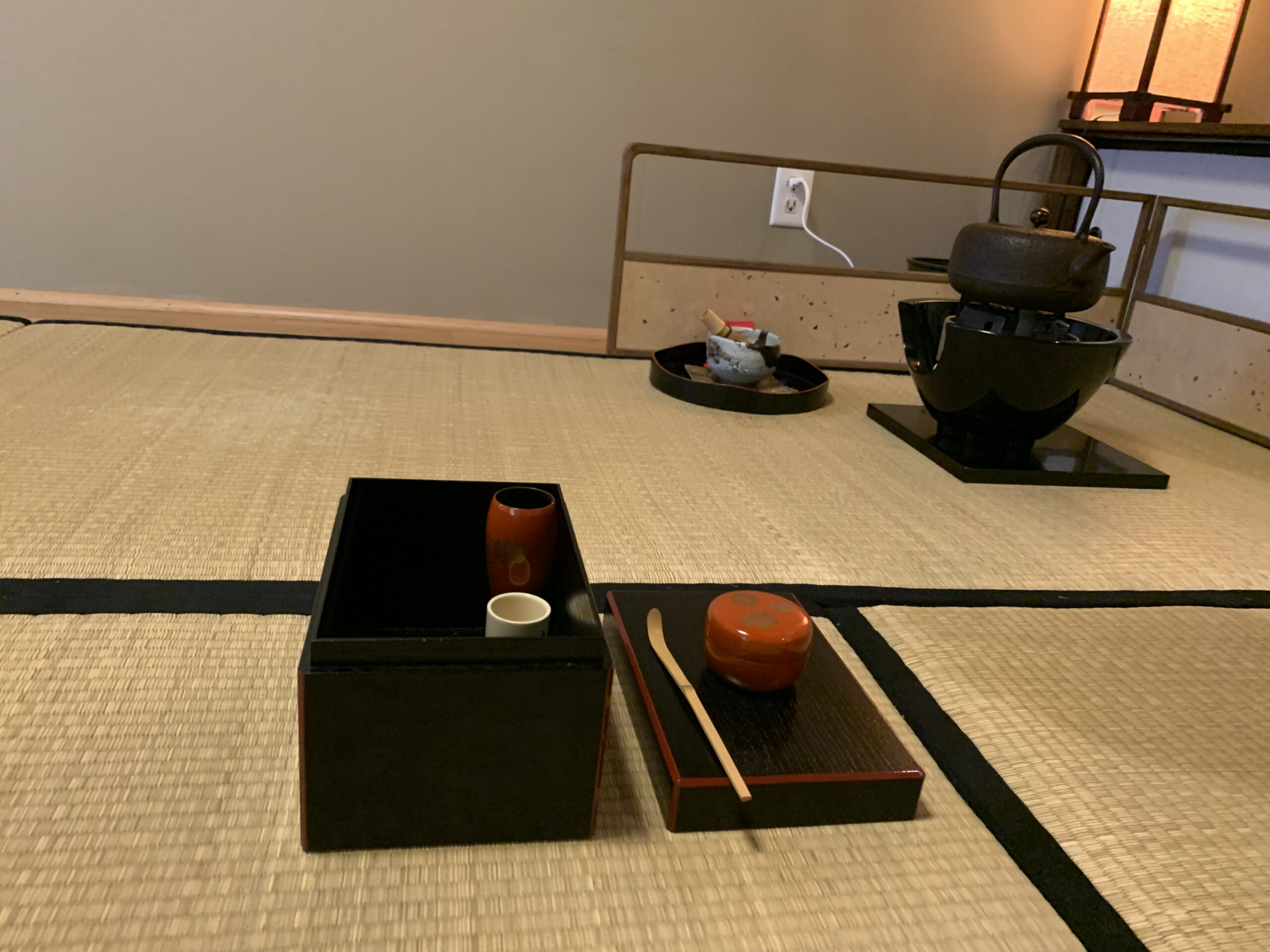日本祭での立礼式点前の練習を約1か月以上していましたので、正座が久しぶり。生徒さんの中には、畳の上の正座でのお点前に四苦八苦でした。
After over a month of ryurei style (the procedure using the table and chair) practice, some of the students struggled sitting on the tatami mat again.
お軸は『楽あれば苦あり』。楽しいことの後には苦労もやってくる。人生とは苦と楽が相伴うものである。お菓子は、日本帰りの生徒さんからお土産にいただいた虎屋の羊羹と、亀谷良永の御池煎餅です。
The writing on the scroll in the alcove was rakuare ba kuari (There is no pleasure without pain). In my experience I have found pleasure and pain repeat alternately. We served the yokan (sweet bean paste jelly) from Toraya in Tokyo and Oike Senbei (light rice cracker) from Kameya Yoshinaga in Kyoto. Both of these treats were gifts from a student who came back from Japan recently.
茶箱点前の中の平点前が卯の花点前です。夏に咲く白い花、卯の花に因んで考案されました。特別な道具は使わず基本的なものを使っています。しばらく茶箱点前をしていませんでしたので、10月の月点前に先んじて、基本を学ぶためにこの点前のお稽古をしてみました。拝見がある場合は、少し複雑になりますが、点前には理路整然とした流れがあり、これを考案された11世玄々斎宗匠、これに少し改良を加えたとされる13世円能斎宗匠の発想に驚かされます。
The most basic form of Chabako (tea box procedure) is unohana demae, which was named after the summer flower Unohana (deutzia) and is usually performed during early summer. This week we practiced this basic procedure to review the chabako before learning the more complicated Tsuki demae (moon procedure) next month. Unohana demae was created by the eleventh Iemoto Gengensai and improved by the 13th Iemoto Ennosai. When we include the viewing part of the procedure, Unohana demae is also complex with a lot to learn. However, the flow of the movement is well thought out and logical. As a result, I’m always impressed by the clever creations of the previous grandmasters.
